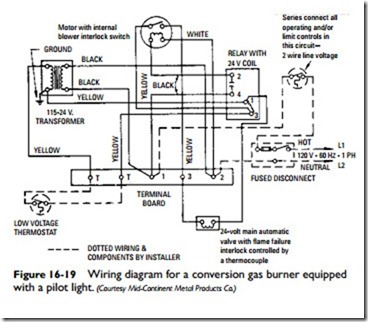Oil Tanks and Oil Piping
Local codes and the National Board of Fire Underwriters will pro- vide information for the installation of oil tanks and piping.
In oil piping, copper tubing is commonly used for suction and return lines. A 3⁄8-in OD minimum is recommended for lines under 30 ft long. If the suction and return lines exceed 30 ft, then 1⁄2-in OD copper tubing is recommended.
Other suggestions for the installation of the oil storage tank and piping include:
1. Use a good-quality pipe joint compound and make your pipe thread connections as tight as possible.
2. Keep the lines between the oil tank and burner as straight as possible (avoid kinks and traps).
3. Keep the connections in the return line to a minimum.
4. Check tubing flares and connections for air leaks (an indication of a poor seal resulting from improper meeting).
The two basic types of piping arrangements are: (1) the single- line system and (2) the two-line system. These two piping arrangements are distinguished from one another primarily by the location of the oil storage tank with respect to the oil-fired conversion burner.
A single-line piping arrangement is used only where the oil storage tank is located above the level of the oil burner. No return line is necessary. The oil is taken from an outlet in the bottom of the storage tank and fed by gravity to the burner. The slope of the pipe should be gradually downward (approximately 1⁄2 in per foot) to a point directly below the burner connection. This downward slope in the line is designed to prevent the formation of air pockets and bubbles. The installation of a shutoff valve in the line is recom- mended.
A two-line piping arrangement is required where the oil storage tank is buried at a level below that of the burner.
